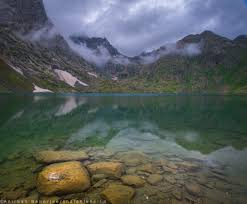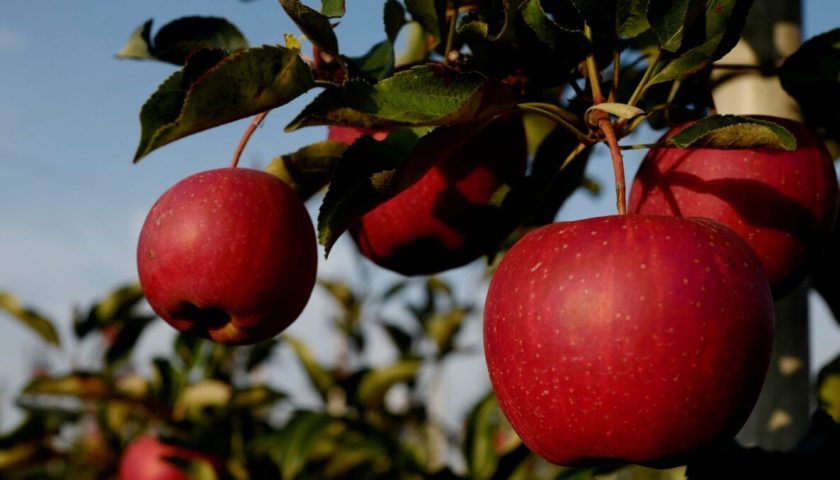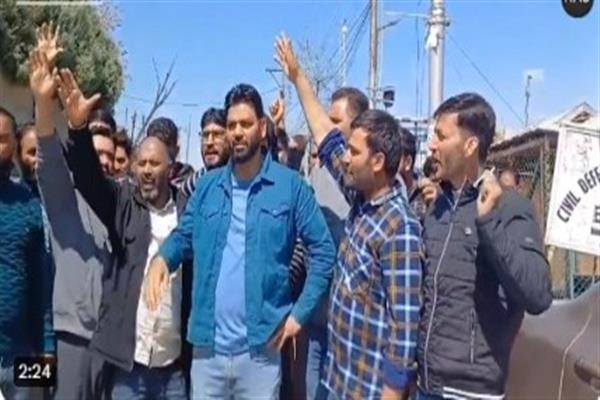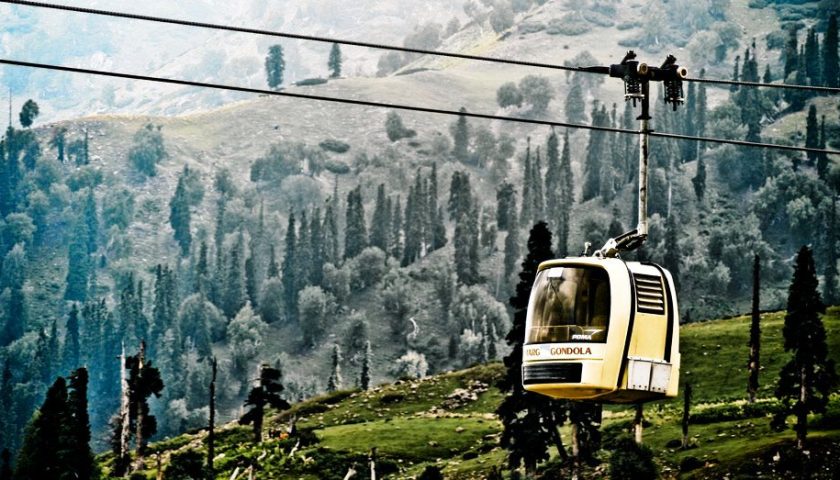There is no place like Kashmir, and the place deserves to be explored.
Named after the Ganges, the Gangabal Lake is considered a holy lake for Kashmiri Pandits
Kashmir Great Lakes Trek is one of the most beautiful treks in India. This trek is located above Sonamarg (or Sonmarg), which lies on the Srinagar-Leh highway just before the Zozila Pass.The true beauty of Kashmir lies in the hidden valleys that are not accessible by road. Until a few years ago this trek was also not accessible to civilians and has innumerable beautiful alpine lakes throughout its trails. It takes around eight days to do this trek, but the vistas leave you with memories that would last a lifetime, and since it’s a moderate level trek, it can be taken up by fit but amateur trekkers or even some first timers.
Many of the lakes on this trek are named after gods from Hindu mythology and come with interesting stories about the origin and existence. The most spectacular lakes on this trek are Gangabal, Vishansar, Krishnasar and Gadsar.
DIFFICULTY : Moderate.
MAX AlTITUDE : 13750 ft
BASE CAMP : Sonmarg
DURATION : 8 Days, 7 nights.
BEST SEASON : July, August and September.
TIPS FOR KASHMIR GREAT LAKES TREK:
* Always carry an ID card with you on this trek as you encounter a lot of army camps on the way.
* Always carry a raincoat as the weather can turn at any minute in the mountains and especially on this trek.
* A trekking pole is a necessity as we encounter a lot of steep ascends/descends on this trek and a trekking pole reduces the load on the knees by as much as 30 per cent.
SHORT ITINERARY
Day 1: Srinagar to Sonmarg (9,000ft) (approx. 80km/2 hrs drive)
Day 2: Sonmarg (9,000ft) to Nichnai (12,000ft) (11km trek/6 hrs)
Day 3: Nichnai (11,500ft) to Vishansar Lake (12km trek/6 hrs)
Day 4: Vishansar Lake (12,500ft) to Gadsar (13,750ft) via Gadsar Pass (10km trek/6-8 hrs)
Day 5: Gadsar (12,000ft) to Satsar (12,000ft) (12km trek/4-5 hrs)
Day 6: Satsar (12,000ft) to Twin Lakes of Gangabal (11,500ft) (9km/6 hrs)
Day 7: Buffer day (Explore Gangabal and Nundkol twin lakes)
Day 8: Gangabal (11,500ft) to Naranag (7,450ft) (11km/6 hrs). Drive to Srinagar.
DETAILED ITINERARY
Day 1: Drive from Srinagar to Sonamarg (9,000ft, 4 hrs)
 Trekking from Sonamarg to Table top on Day1. One can see the Thajiwas Glacier in the background.
Trekking from Sonamarg to Table top on Day1. One can see the Thajiwas Glacier in the background.
We took a flight from Delhi to Srinagar in the morning. We Left for Sonamarg in the afternoon. Srinagar to Sonamarg is about a 2-hour drive. Sonamarg, a place famous for its meadows comes on the Srinagar-Leh highway and is the last big Kashmiri town on the way to Ladakh. We reached our guesthouse by the mid afternoon where we were given a briefing by the trek guides.
Day 2: Trek From Sonamarg To Nichnai (11,500ft, 6-7 hrs)
 Location of the first campsite in Nichnai. Mules are there to carry our luggage.
Location of the first campsite in Nichnai. Mules are there to carry our luggage.
Trail Profile: Steep ascend from Sonamarg to Table Top.Then a gradual trek to Nichnai.
We got up in the morning at around 7, had breakfast and were then driven to the starting point of the trek which is a few kilometres just before Sonamarg. The first part of the trek is a steep ascend up to Table Top. As we trek we can see the famous Sonamarg glaciers and valley in the background. Climbing till table top literally and figuratively takes your breath away. At Table Top there is a small dhaba where you have a couple who make some of the most amazing kahwa. From Table Top to Nichnai the path becomes gradual as we enter a valley. Nichnai is a camping ground next to a stream which ends up in the Sind River. We reached our campsite around 3pm and quickly settled down to have some tea and pakoras.
Day 3: Trek from Nichnai to Vishansar Lake (12,500ft, 6-7 hrs)
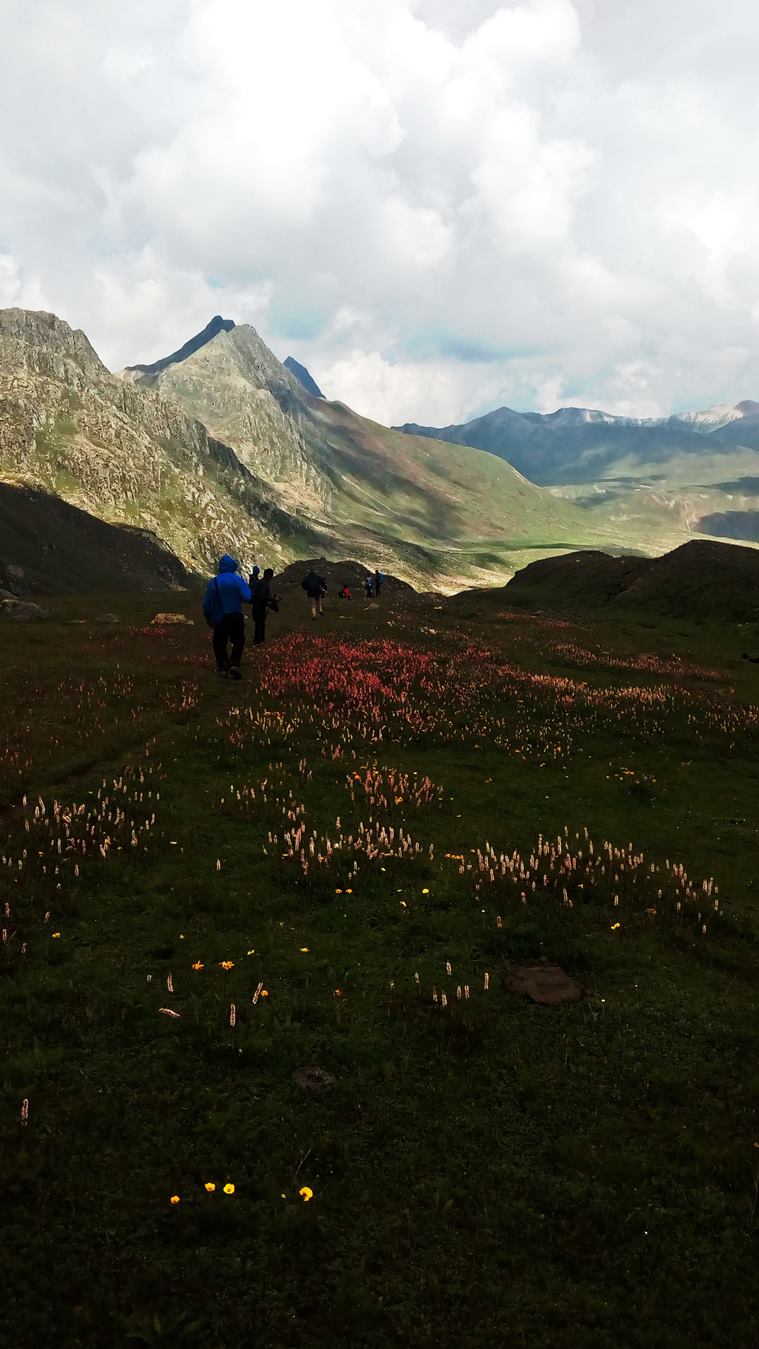 Walking towards Visnunsar lake, one can see the wild Himalayan flowers.
Walking towards Visnunsar lake, one can see the wild Himalayan flowers.
Trail Profile: Steep trek up to the Nichnai Pass.Then a gradual descent to Vishansar Lake.
We started our trek after breakfast crossing a stream and then ascended towards the Nichnai Pass. As we ascend, the whole Nichnai valley opens up behind us and there on the left is a small glacial lake-a small taste of things to come ahead on the trek. After crossing Nichnai we descend reaching a flat riverbed with a stream on our right side. A further half an hour walk through a beautiful meadow takes us to our campsite in Vishansar. This the first big alpine lake on our trek. Named after Lord Vishnu, this lake is around a kilometre across. On the far end one can see the small glaciers that feed this lake.
Day 4: Trek from Vishansar Lake to Gadsar (13,750ft, 8 hrs)
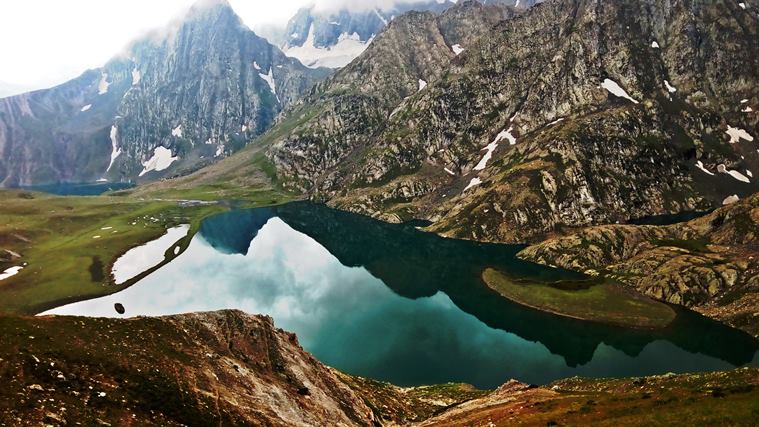 Krishnasar lake is named after Lord Krishna. It is visible on day 3 while climbing Gadsar pass.
Krishnasar lake is named after Lord Krishna. It is visible on day 3 while climbing Gadsar pass.
Trail Profile: Steep ascent up to the Gadsar Pass. Then descent to Gadsar Campsite.
Today is probably one of the prettiest days on this trek and the longest. Crossing Vishansar, we gradually ascend towards Krishnasar,the other great lake on this climb up to Gadsar. Kishnasar named after Lord Krishna is about the same size as Vishansar and slightly prettier. All these lakes are classified as Oligotrophic lakes(with low organic content and a greater level of oxygen these lakes have very clear and drinkable water). After crossing this beautiful lake we climb towards Gadsar Pass.
At over 4000 metres, this is the most dangerous part of the trek. As we ascend, we can see both the Vishansar and Krishnasar lakes in the background – a sight for soar eyes. After crossing the Gadsar Pass we descend gradually towards the Gadsar lake. On the way we find a beautiful meadow of wild flowers and if your lucky you will be able to spot Himalayan Marmots in the background. Gadsar Lake with its glacier and wild flowers in the background is stunning. One is reminded of Emperor Jehangir’s words “Gar firdaus, ruhe zamin ast, hamin asto, hamin asto, hamin asto” (If there is a heaven on earth, it’s here, it’s here, it’s here). Our camp is an hour from Gadsar lake next to an army camp. The Army Jawans are always happy to meet people in this beautiful but desolate place.
Day 5: Trek from Gadsar to Satsar (12,500ft, 4-5 hrs)
 A photo from Gadsar Pass with both Krishnasar and Vishansar lakes in the background.
A photo from Gadsar Pass with both Krishnasar and Vishansar lakes in the background.
Trail Profile: Gradual ascent up to the Gadsar Pass. Then gradual descent to Satsar Campsite.
We start off crossing an ice bridge and follow a long gradual trail towards Satsar. On the way you will find small wild strawberries which you can pluck an eat, though not a lot these are an excellent source of vitamin C. As we ascend towards Satsar Pass, we cross a stream. On the top is another army check post where you will have to show your identification. After crossing the check post we slowly walk towards our campsite. On the way we cross a series of small interconnected lakes to our campsite. If you have the energy after reaching your campsite you can cross a stream and ascend towards another pretty lake on the right.
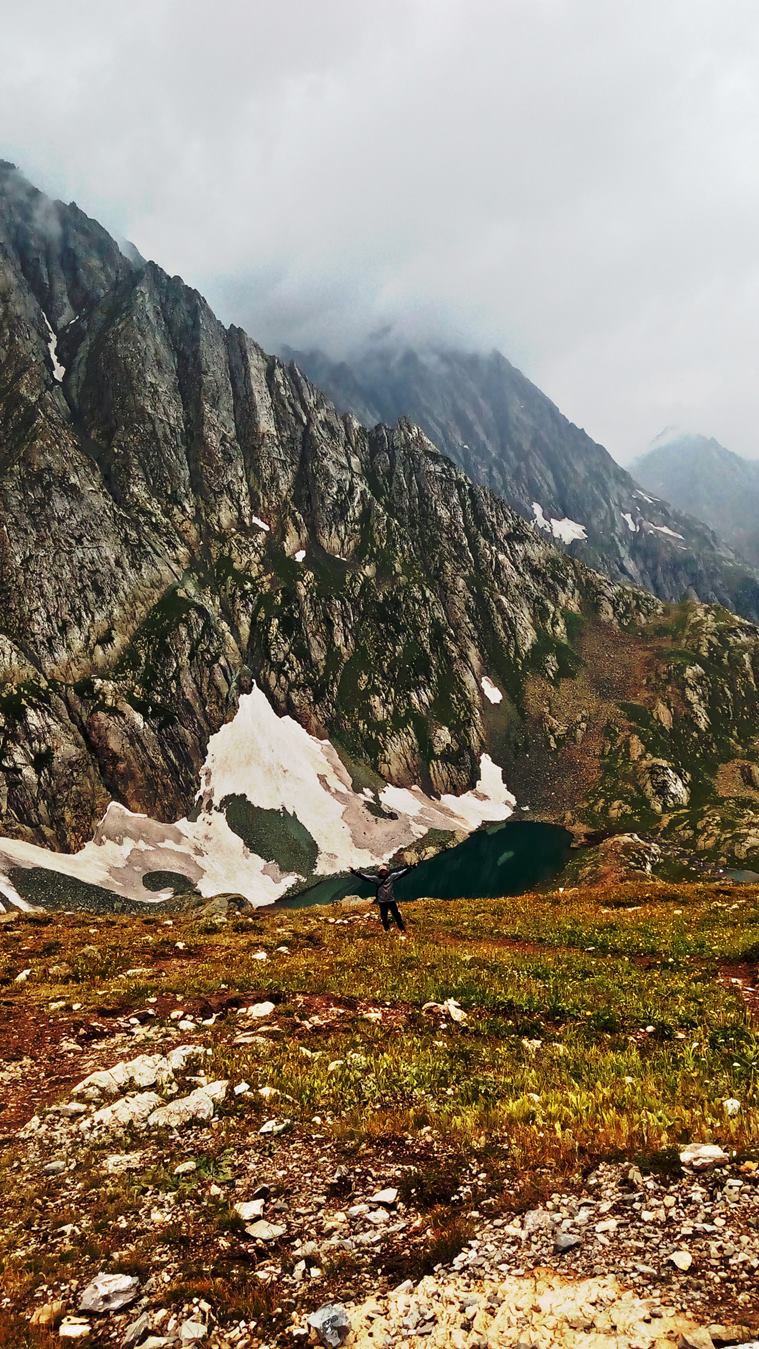 After passing Gadsar pass we descend towards our campsite. There is another beautiful lake in the background.
After passing Gadsar pass we descend towards our campsite. There is another beautiful lake in the background.
 The beautiful Gadsar lake. It is one of the most beautiful lakes on the trek.
The beautiful Gadsar lake. It is one of the most beautiful lakes on the trek.
Day 6: Trek from Satsar to Gangabal Twin Lakes (12,500ft, 6-7 hrs)
 The Satsar Pass in the background, it is generally rains a lot here. Their is a army camp on top of the pass where you have to get yourself registered.
The Satsar Pass in the background, it is generally rains a lot here. Their is a army camp on top of the pass where you have to get yourself registered.
Trail Profile: Rocky ascent to the Gaj Pass. Then a steep climb down towards the Gangabal twin lakes.
We start early crossing a rocky terrain full of boulders towards Gaj Pass. The ascent again is steep but is worth it. Once you reach the pass you would know why. In front of us is the great Mount Harmukh. Harmukh and the peaks around it are thought to be the abode of Lord Shiva, and Kashmiris believe human feet can never touch the Harmukh summit. According to legend no poisonous snake exists in parts of the valley from which the peak of Harmukh can be seen.
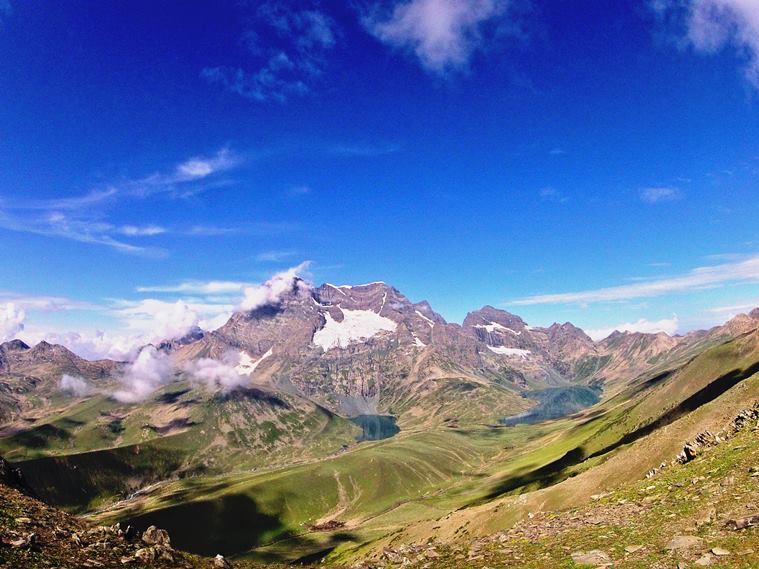 Mount Harmukh is 5142 metres from the Gaj Pass with Gangabal in the background.
Mount Harmukh is 5142 metres from the Gaj Pass with Gangabal in the background.
On either side of Harmukh is Gangabal and Nandkol. Gangabal is the largest and most beautiful lake on this trek. Named after the Ganges, this lake is over 2km across. This lake is sacred to Kashmiri Pandits and a lot of them take part in the Gangabal Harmukh yatra. This place is considered as holy as Haridwar as, in the past, ashes of their ancestors were immersed here.
 (The Gangabal Lake is the biggest and prettiest lake on the trek. Named after the Ganges, it is considered a holy lake for Kashmiri Pandits.
(The Gangabal Lake is the biggest and prettiest lake on the trek. Named after the Ganges, it is considered a holy lake for Kashmiri Pandits.
Day 7: Buffer day for exploration
We are supposed to keep a buffer day during this trek.If the weather gods are with us we can use this day to explore the Gangabal and Nandkol lakes.
Day 8: Trek from Gangabal to Naranag (12,500ft, 6 hrs)
 On our last day we descend to our village in Naranag.
On our last day we descend to our village in Naranag.
Trail Profile: Gradual walk. Then a steep descent to Naranag.
The trail to Naranag is steep. It is very important that you protect your knees and walk slowly taking small steps. This descent is long and arduous, partly because the village seems so near yet takes hours to reach. Naranag is a small picturesque village. Next to the village our the remains of an ancient hindu temple complex dedicated to Lord Shiva, built by the 8 century Kashmiri ruler Lalithdatiya Muktadiya. After reaching Naranag you can catch a cab back to Srinagar which is around 2-hour from here.
For More Details Visit
www.JKLTravels.com Or www.KashmirTravels.in

